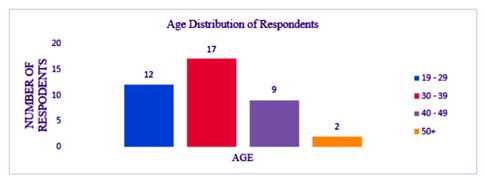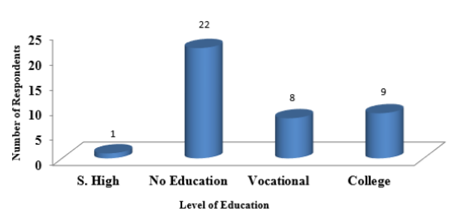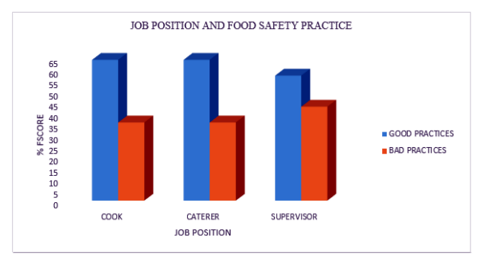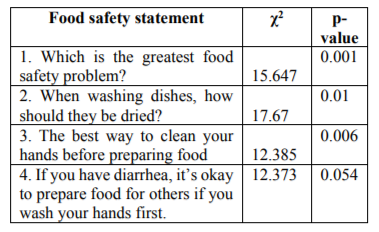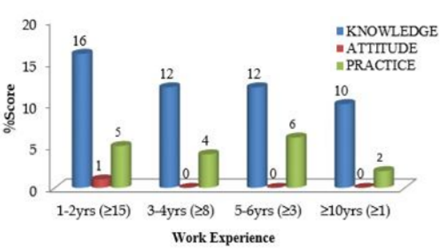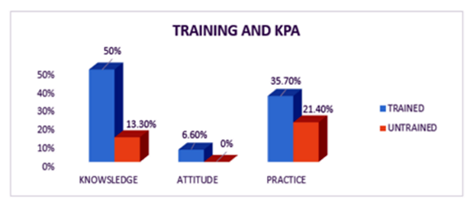Information
Journal Policies
Safety of Foods Given to Students under the School Feeding Programs by Cooks in Tamale Metropolis, Ghana
Dr. Abdul Malik Bawah1*, Dr. Herman Lutterodt2, Dr. Abdallah Iddrisu Yahaya3
2.Department of Food Science and Technology, Kwame Nkrumah University of Science and Technology, Ghana.
3.Senior Lecturer, University for Development Studies, UDS, Dept. Of Medicine and Allied Science, Clinician, Tamale Teaching Hospital, Regional Tb Clinician, Head of Chest Unit, Tamale Teaching Hospital (TTH) Ghana.
Copyright : © 2018 Authors. This is an open-access article distributed under the terms of the Creative Commons Attribution License, which permits unrestricted use, distribution, and reproduction in any medium, provided the original author and source are credited.
The Ghana School Feeding Program provides children in deprived kindergarten and primary schools in the country with a hot and nutritious meal at school. Despite the numerous advantages of the program, the media has widely reported quality and safety challenges. Adequate food safety knowledge of cooks of the feeding program is vital for positive food safety attitude as well as good food safety practices. It is against this background that this study was conducted to find out the safety knowledge of the cooks in the Tamale Metropolis and how it translates into safe food attitude and practices. The target population was all schools benefitting from the feeding programmed in the Tamale Metropolis and have run the programmed for at least two academic years. A descriptive study design utilizing mixed method was used. The list of all beneficiary schools that have run for at least two academic years was obtained from the Metropolitan Secretariat of the School Feeding Program and divided into three strata according to the three sub-metropolises. Simple random sampling was used to select the study schools from each stratum. Pre-tested and standardized structured questionnaires and observation checklist were used. Data was analyzed using SPSS version 20 and presented descriptively. The findings showed that 67.4% of the respondents had knowledge, 86.7% of the attitude statements and 74.1% of food safety practice statements were sufficiently responded. Despite these high scores, their knowledge, attitude and practices were poor with respect to some critical aspects of food safety; food storage, food contamination, personal and food hygiene with insufficient scores of 66.7%, 85.7% and 70.5% respectively. The study recommends regular food safety education and training to all cooks as well as provision of basic food hygiene facilities to beneficiary schools.
Food Safety, Knowledge, cooks, School Feeding Program,Public Health and Community Medicine
1. Introduction
The school feeding program is an educational policy with numerous advantages as evident by many research findings with the ultimate aim of benefiting all public basic schools across the country. Many school children are assured of food and this is a relief to many parents, especially the poor. The program has tremendously expanded its coverage since its implementation in 2005 with 10 pilot schools to now feed over 1,113,928 pupils across the country (GOG, 2014). Despite the enormous benefits, there are numerous food safety challenges confronting this program. As a domestic feeding program, it is faced with the challenges of food contamination, unhygienic conditions and sanitation. The program is run in public basic schools and so any food safety and quality challenges will be of serious public health concern. Many food safety issues have been raised with regards to quality of ingredients, food stuff and the hygienic conditions under which meals are being prepared for pupils.
Food poisoning outbreaks mostly occur when cooked foods are handled by persons who carry pathogen in their nares or on their skin, (Protocarrero et al., 2002). These findings are indications for potential food poisoning outbreaks in school feeding programs. Studies have indicated that high prevalence of diarrhoea morbidity is caused by failure to wash hands after defecation, before cooking, before eating and buying prepared foods. These findings are consistent with other studies conducted in Ghana (Benneh et al., 1993; Shier et al., 1996; Mensah et al., 2002; Boadi et al., 2005) and other African countries (Thomas et al., 1999; Roberts et al., 2001; Kung’u et al., 2002 and Taylor et al., 2002; Shojaei et al., 2005). The food safety knowledge of cooks in all critical steps of food preparation and how this translates into safe food attitude and practices is therefore vital.
Many food safety issues have been raised with regards to quality of ingredients, food stuff and the hygienic conditions under which meals are being prepared for pupils. The role of cooks in food safety and in the occurrence of food poisoning is very critical because they (the cooks) are sources of pathogens and contaminants in food during preparation (Green et al., 2005 and Lilliquist et al., 2005). A caterer was interdicted some time ago after maggots were found in the food of some students, an incident which was reported by XYZ Radio, a local radio station in Accra on 19th July, 2013. On another account it was reported by XYZ station on September 10, 2013 that some school children in Accra who are beneficiaries of the school feeding program (SFP) complaining about the safety and quality of food served to them by caterers. According to the report, one pupil told the program “I always go to toilet when I eat the food so I have stopped eating the food.” Another pupil said “House flies hover on our food. My friends get diarrhea and they are suffering”. On July 17, 2013, it was reported by the BBC (http://www.bbc.com/news/world-asia-india-23337445) that at least 22 children died and dozens more have fallen sick after eating a school meal in India's eastern state of Bihar. The poisoning occurred at a government school in the village of Masrakh in Saran district. India's Mid-Day Meal Scheme provides free food in order to boost attendance and retention just as is the case in Ghana, but often suffers from poor hygiene practices.
The general objective of this study is therefore to Access the food safety knowledge, attitudes and practices of cooks who prepare food for pupils fed under the Ghana School Feeding Program.
2. Literature Review
Contaminated food and water have been sources of illness in all human societies since ancient times. In contemporary societies across the world, food-borne diseases are still among the most widespread health problems. The health burden posed by food-borne diseases in both developing and developed countries is substantial. The severity of the illness is often fatal even though, the burden of food-borne disease is not well defined at the global, regional or at country levels (WHO Food Safety, undated). Estimating the burden of food-borne diseases is e ven more complex due to the fact that very few illnesses can be definitively attributed to food. These links are only made during situations of outbreaks (Flint, Van Duynhoven, Angulo, DeLong, Braun, Kirk, Scallan, Fitzgerald,Adak, Sockett, Ellis, Hall, Gargouri, Walker, Braam, 2005). Food-borne diseases often go undetected or underreported making it really difficult to establish the extent of the problem. It is currently estimated at 1.8 million deaths, which is only a tip of the iceberg (WHO Food Safety, undated).
The basis for the estimation of the burden attributable to food and specific pathogens that are commonly transmitted is established by studies that determine the burden of acute gastroenteritis. Although not all acute gastrointestinal diseases are food-borne and food-borne diseases do not always result in acute gastroenteritis, food remains an important vehicle for pathogens that cause acute gastroenteritis (Flint et al., 2005). It is more difficult to obtain global or regional estimates of food-borne illnesses by putting together data obtained from various countries because of the influences of the various study design and existing surveillance systems which must be considered (Flint et al., 2005). With respect to the difficulty emanating from study design, prospective and retrospective studies yield different disease estimates.
Prospective cohort studies contain community and etiologic components, while retrospective study designs are mainly cross-sectional surveys with or without supporting targeted studies. Prospective cohort studies, although expensive, provide community incidence rates that are pathogen specific. In cross sectional surveys, investigators ascertain the prevalence of self reported acute gastroenteritis among persons in the community during a set period of time. For example, in a retrospective study in the United Kingdom, reported an incidence of 5.5 cases per person-year but a subsequent prospective study found and reported a calculated incidence which is almost 3 times that of the prospective study (Infectious Intestinal Diseases Study Team, 2000). When retrospective estimate of food-borne diseases burden from studies conducted in the United Kingdom, Australia, Canada, Ireland, and the United States were compared, the results were similar to previous estimates from other retrospective studies (Palmer, Houston, Lervy, Riberio & Thomas, 1996; Feldman & Banatvala, 1994; Flint et al., 2005). On the other hand, prospective estimates from both an English study and another conducted in the Netherlands are similar (Infectious Intestinal Diseases Study Team, 2000; Wit de, Koopmans & Kortbeek, 2001). Reasons for the differences between study designs have been attributed to recall bias or telescoping (Infectious Intestinal Diseases Study Team, 2000). A more thorough examination of the effect of study design on disease estimates is therefore required prior to a comparison of data from various national studies.
Estimates of the incidence of acute gastroenteritis during childhood give inferences about the enormity of the problem since a high proportion of cases are caused by food-borne pathogens (Flint et al., 2005). According to FAO estimates, as much as 70% of diarrhea diseases in developing countries are believed to be of food-borne origin (FAO, 1995). As recognized by the World Health Organization (WHO), food-borne diseases include a wide spectrum of illnesses which are a fast growing public health concern worldwide and contribute greatly to illness, compromised nutritional status, loss of immunity to disease and loss of productivity (WHO, undated).
New challenges for food safety have also emanating from the globalization of the food supply system contributing greatly to the international public health problem of food-borne diseases. This is because of the growing industrialization and trade of food produce, rapid urbanization associated with increased food preparation and consumption outside the home and the emergence of new or antibiotic-resistant pathogens and food vehicles (WHO, undated). Effective and sustainable efforts aimed at preventing food-borne diseases at national and international levels are possible if the magnitude of the problem is determined. In light of this, the WHO has embarked in 2010 on a Global Initiative toEstimate the Global Burden of Diseases in conjunction with multiple partners (WHO, undated).
The South African Department of Health has also recognized that food-borne disease outbreaks are under-reported. Most diarrheal illness resolve within 24 to 48 hours without any medical attention, so many food-related illnesses are not diagnosed and associated food-borne disease outbreaks are often not recognized (Department of Health, 2009). The Department of Health is also of the view that “when people seek medical attention, health workers are less likely to report these less severe conditions”, thus posing a challenge to the health care system to maintain the knowledge and resources to identify and respond to these outbreaks.
3. Methodology
The study area is Tamale Metropolis. It is one of the three metropolises in Ghana, and is the capital city of the Northern Region and the fastest developing town in West Africa (http://www.ghanadistricts.com).
A descriptive study design utilizing mixed method was used. Direct observation of the food preparation process was done to assess the food safety attitude of the cooks. Only beneficiary schools where the feeding program has been implemented for at least two years participated in the study while schools that have less than two academic years of implementation were excluded. The list of these schools was obtained from the School Feeding Program Secretariat in the Tamale Metropolis and divided into three strata according to the three Sub-metropolises (Tamale North, Central and South). Simple random sampling was used to select the participating schools from each stratum; four (4) schools from Tamale South Sub-metroplis and three (3) each from the North and Central Sub-metropolises. A total of ten (10) schools therefore participated in the study. All the cooks, caterers and supervisors in the participating schools took part in the study. In all, forty (40) direct participants consisting of twenty-eight (28) cooks, five (5) caterers and seven (7) teachers with additional assignment to supervise the feeding sessions were direct participants with one thousand eight hundred and fifty (1850) pupils observed during serving and eating sessions. This is as shown in table 1.
With regards to data collection methods, the food safety knowledge, attitudes and practices of caterers and cooks regarding safe food handling were determined by means of a face to face interview utilizing pre-tested and standardized semi-structured questionnaire, and direct observation of the food preparation and serving sessions respectively.
Face to face interviews were conducted by trained interviewers using standardized questionnaires. Interviews were conducted both in English and Dagbani. The questionnaire was divided into seven (7) sections/sub-headings and comprised a total of one hundred and fifteen (115) questions. Sections of the questionnaire included general Demographic Characteristics of respondents, Food Safety Training and related information; knowledge, attitude and practices in relation to food safety (environmental and personal hygiene, kitchen hygiene, food storage and food environment hygiene practices). The Questions obtained on demographic data of participants include age, level of education, history of training; information on food hygiene and safety, buying and storing food, attitudes towards food safety and hygiene principles. To realize knowledge questions, a modified 3-point Likert scale was used ranging from agree to disagree and not sure. Other plausible answers listed were Yes, no; True, False; e.t.c and interviewees were required to circle the correct responses as applicable.
An assessment was done to determine the availability or otherwise of hygiene and sanitation equipment for hygienic and safe cooking and eating practices in the participating schools. In each school, an observation checklist was used to assess the availability of basic equipment such as buckets or sinks for washing hands, soap, clean drying cloths etc. Cooks were observed throughout the process of food preparation, serving and eating sessions by pupils. This enabled us to determine whether basic food hygiene and safety practices were observed.
The analysis of the data is done according to the research objectives. The first objective of the study was to realize the food safety knowledge, attitudes and practices of cooks who prepare food for pupils fed under the Ghana School Feeding Program.
Out of 40 participants, 12 (30%) were 18 to 20 years, 17 (42.5%) within 30 to 39, 9 (22.5%) are within 40 to 49 years and only 2 (5%) were 50 to 60 years. Thus, a total of 38 respondents (95%) out of the 40 respondents are less than 50 years old. Twenty-nine (29), representing 72.5% are less than forty (40) years old. It can therefore be concluded that employees of the School Feeding Program in the Tamale Metropolis are largely young people. This is as shown in Figure 1 below.
The bars represent the number of respondents and the corresponding level of education. From the chart, it can clearly be seen that the level of education of the cooks were very poor. Out of the total number (40) of cooks interviewed, only 1 attended school to the second circle level with 22 having no educational background. 8 had vocational education with and 9 college degree.
Food safety attitude and knowledge of the respondents was positive with respect to 86.7% of the statement and negative with respect to 13.3%. That is their attitude was negative with respect to the correct method of thawing frozen meat and food borne pathogen identification with scores of 47.5% and 5% respectively. Therefore, there are still challenges with assuring food safety because every step in the food preparation process is critical to the safety of the food.
The cooks surveyed demonstrated very high level of good food safety practices in respect of ten (86.7%) of 14 food practice statements and bad practices with respect to four critical food safety practices. Thus the wholesomeness of the food cannot be guaranteed. The scores for food safety practice are shown below.
Formal education had sufficient impact on food safety knowledge as 86.4% of respondents with formal education sufficiently responded to the food safety knowledge statements. The attitude of educated respondents was poor with regards to “correct method for thawing frozen meat or broiler”, and “Food-borne pathogens can be seen by the eye” where respondents showed negative attitude with 5% and 47.5% correct scores respectively. In terms of practice, they have a lower limit score of 70% and a high score of 97.5%. “Do you keep cooked meat or chicken at room temperature for more than 4 hours” necessarily require some level of education to be properly practiced because of its significance with education with a χ2 value of 10.725 and a p-value of 0.013. Thus formal education is not a panacea for total food safety assurance. These high scores by respondents with formal education is consistent with established studies that providing education for personnel in the food industry in hygiene matters is an effective means of improving food handling practices, and thus, the safety of food (WHO, 1996; FAO 1997).
Out of the thirty food safety knowledge questions, cooks responded sufficiently to 50% of them. Caterers on the other hand, responded sufficiently to 75% of the statements while the supervisors sufficiently responded to 53.3%. Out of the 14 food practice statements, ≥ 20 of the cooks and ≥ 4 of the caterers responded correctly to nine (9) of the statements representing 64.3%. On the other hand, ≥ 6 of the supervisors responded correctly to eight (8) of the practice statements representing 57.1% of the practice statements. With regards to statistical significance, responses to eight of the questions showed significant relationships with job position with p-values of < 0.05 and chi-square values. The high scores by caterers, most of whom had specific training on food hygiene and safety practices than supervisors who are teachers suggest that in addition to formal education, food safety education and training are still vital to assuring the safety of food as found by WHO (1996). Table 4 presents the food safety knowledge scores according to the job position of food handlers.
Generally, the cooks of the school feeding programme have shown very good food safety practice. Figure 3 below is an illustration of the score by job position of the food handlers.
Respondents with 5-6yrs and ≥ 10yrs sufficiently answered 96.75% of the knowledge statements compared with those with less than 5yrs of work experience who sufficiently responded to 53.3% of the knowledge statements. Five knowledge questions showed significant relationship with work experience with p-values of less than 0.05 (p< 0.05) as in table 2.
With respect to food safety attitude, all respondents with >2yrs of work experience showed 100% positive attitude to all the attitude statements. Those with 1-2yrs of experience showed negative attitude with respect to the statement, “Food-borne pathogens can be seen by the eye” with significant relationship between this statement and work experience with p-values of 0.001. Also, all the respondents had very good food safety practice but the practice increases with experience. Those with 1-2yrs of experience poorly practice five of the statements, while those with >2 years of experience poorly practice 3 statements. The wearing of gloves when handling ready to eat food showed statistically significant relationship with work experience with chi-square and p-values of 17.104 and 0.001 respectively. Figure 4 below illustrates the insufficient knowledge, poor attitude and bad practices scores according to food handler’s work experience.
The bars represent the percentage scores of insufficient knowledge, poor attitude and bad practices according to the duration of work experience.
Cooks who had food safety training g background correctly responded to 66.7% of the questions on knowledge and are therefore deficient in knowledge with respect to 10 questions (33.3%). Untrained food handlers on the other hand had insufficient knowledge with respect to 50% of the knowledge statements. Five statements are statistically significant with training with p–values < 0.05. With respect to attitude, all those with food safety training background had positive food safety attitude with respect to all the statements but untrained staff have negative attitude with respect to the statement “Eating covered leftover cooked food, kept at room temperature for more than 6 hours, is at high risk to cause food poisoning” and is statistically significant with training with p-value of 0.043. For food safety practice, respondents with food safety training background showed poor practices with respect to three statements (21.4%) while those without food safety training background are poor with respect to five statements (35.7%). Therefore, food safety training has an impact on the food safety knowledge, attitude and practices of the food handlers and agrees with Campbell et al., 1998 who found that public health intervention studies such as food hygiene education and training have positively improved food safety. Figure.5 below shows the number of knowledge, attitude and practice statements in respect of which both trained and untrained respondents are deficient.
4. Conclusion And Recommendation
Cooks of the School Feeding Program are deficient in food safety knowledge with regards to critical aspects of food safety. Despite this deficiency, their positive attitude and good food practices are quite impressive. This is consistent with the finding that positive attitude and good practices can be learnt from the home without necessarily having the corresponding knowledge.
Every step in the food preparation process is critical. As such, regular food safety education, training should be provided to cooks of the feeding program in a step-wise manner to equip them with sufficient knowledge and the right attitude that will eventually translate into good safety practices in order to assure the safety of meals cooked for pupils in basic schools. In addition to this, basic hygiene facilities and food preparation equipment should be provided to beneficiary schools of the feeding programmed to enable them practically implement their knowledge. Monitoring mechanisms should be put in place to ensure all food-handlers under the feeding program follow all principles of food safety provided by the GSFP, the Ministry of Health and the Food Drugs Authority.
References
- British Broadcasting Corporation News Report, July 17, 2013 by Biswas, S. http://www.bbc. com/news/world-asia-india-23337445 (accessed on December 15, 2013).
- Campbell, M.E., Gardner, C.E., Dwyer, J.J., Isaacs, S.M., Krueger, P.D. & Ying, J.Y. (1998). Effectiveness of Public Health Interventions in Food Safety: A Systematic Review. Canadian Journal of Public Health, 89(3): 197-202.
- Food and Agricultural Organization (FAO). (1997). Essential Safety Requirements for Street-Vended Foods, (revised edition), FAO Food and Nutrition Paper. WHO/FNU/FOS/96.7.
- GOG, Ghana School Feeding Programmed Document (2006)
- Green, L.R., Radke, V., Mason, R., Bushnell, L., Reimann, D.W., Mack, J.C., Motsinger, M.D., Stigger, T., & Selman, C.A. (2007). Factors related to food worker hand hygiene practices. Journal of Food Protection, 70, (3), 661-666. Retrieved from http://www.cdc.gov/nceh/ehs/EHSNet/Docs/JF P_Food_Worker_Hand_Hygiene.pdf
- Lillquist, D.R., McCabe, M.L., & Church, K.H. (2005). A comparison of traditional handwashing training with active handwashing training in the food handler industry. Journal of Environmental Health, 67(6), 13-16
- Mensah, P., Yeboah-Manu, D., Owusu-Darko, K. & Ablordey A. (2002). Street Unusan N. Consumer food safety knowledge and practices in the home in Turkey. Food Control. 2007; 18: 45-51.
- Taylor CL. Data gathering designs to evaluate educational programs. Institute of Food and Agricultural Services. University of Florida Cooperative Extension.
- World Health Organization (WHO) (1996). Food Safety Issues: Essential Safety Requirements for Street Vended Food (Revised edition). World Health Organization.Geneva.
- XYZ Radio; a local radio station in Accra; Ghana. http://www.radioxyzonline.com






